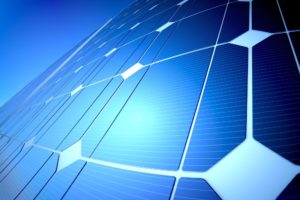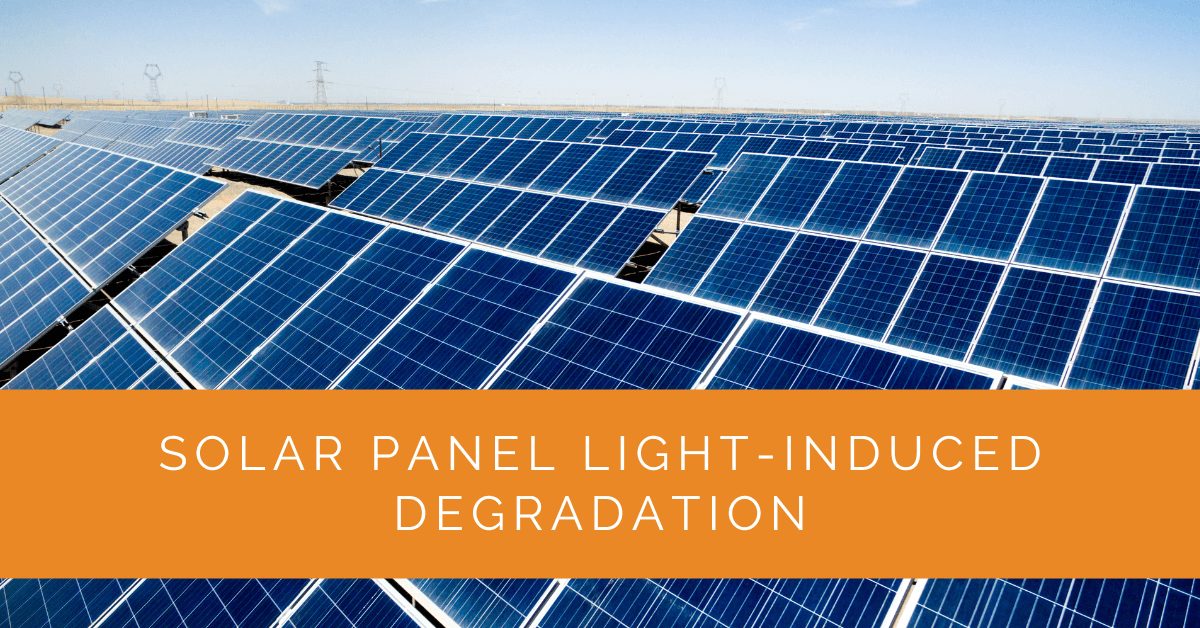Solar panels, also known as photovoltaic (PV) modules, have transformed how we capture sun energy. However, these advanced systems are not invincible to the forces of nature. One of the main challenges solar panel technology faces is Light-Induced Degradation (LID). This phenomenon can negatively impact the efficiency of solar cells and the overall performance of PV modules. This article will explore LID in greater detail, examining its mechanisms, detection methods, and mitigation strategies.
Contents
- 1 Key Takeaways
- 2 Solar Panels and Photovoltaic Modules
- 3 What is Light-Induced Degradation (LID)?
- 4 Case Study: Mitigating Light-Induced Degradation in Solar Panels
- 5 Expert Insights From Our Solar Panel Installers About Understanding Solar Panel Light-Induced Degradation
- 6 Experience Solar Excellence with Us!
- 7 Conclusion
Key Takeaways
- Light-Induced Degradation (LID) is a phenomenon that temporarily reduces the efficiency of solar cells in PV modules, primarily affecting boron-doped silicon solar cells.
- LID occurs due to the interaction of boron and oxygen during the crystal growth process, forming boron-oxygen complexes that trap electron carriers.
- LID mitigation strategies include optimizing boron doping, passivation techniques, and monitoring methods like electroluminescence imaging and IV curve measurements.
Solar Panels and Photovoltaic Modules
Before we dive into the intricacies of LID, let’s begin with a basic understanding of solar panels and photovoltaic modules. Solar panels are composed of multiple photovoltaic cells, also known as solar cells, which convert sunlight into electricity. These cells are typically made of silicon, a widely used material due to its excellent semiconductor properties.
What is Light-Induced Degradation (LID)?
Light-Induced Degradation (LID) is a phenomenon observed in silicon solar cells during the first hours of exposure to sunlight. It results in a temporary reduction in the efficiency of the solar cells, leading to a loss of performance. LID occurs primarily in boron-doped silicon solar cells, commonly used to manufacture PV modules.
Insights into LID Mechanisms
We need to explore its underlying mechanisms to understand LID better. LID primarily occurs due to the interaction of boron and oxygen in the silicon crystal structure during the Czochralski process, which is used to grow silicon wafers for solar cells.
During this process, boron, a dopant added to create p-type silicon, combines with traces of oxygen in the crystal to form boron-oxygen complexes. These complexes trap electron carriers in the crystal, reducing the solar cell’s efficiency.
Detecting and Measuring LID
Detecting and measuring LID is crucial for maintaining the performance of PV modules. Several methods and tools are available, including electroluminescence imaging and current-voltage (IV) curve measurements.
Electroluminescence Imaging
Electroluminescence imaging involves capturing images of the solar cells while they emit light. Defects and boron-oxygen complexes can be detected through this method, providing insights into the extent of LID.
IV Curve Measurements
IV curve measurements help quantify the reduction in efficiency caused by LID. By comparing the IV curves of cells before and after exposure to sunlight, manufacturers can assess the impact of LID on real performance.

Mitigation Strategies for LID
Mitigating LID is essential for maintaining the long-term efficiency of PV modules. Manufacturers employ various strategies to reduce the effects of LID, including boron doping optimization and passivation techniques.
Boron Doping Optimization
Boron doping optimization aims to minimize the formation of boron-oxygen complexes during crystal growth. By carefully controlling the boron doping process, manufacturers can reduce the occurrence of LID.
Passivation Techniques
Passivation techniques involve treating the solar cells to create a protective layer that reduces the interaction between boron and oxygen. This layer helps stabilize the cells and minimize LID.
Case Study: Mitigating Light-Induced Degradation in Solar Panels
Background
At Solar Panels Network USA, we prioritize maintaining the highest efficiency and performance standards for our solar panel installations. One of the key challenges we address is Light-Induced Degradation (LID), which can temporarily reduce the efficiency of silicon-based solar cells. Understanding and mitigating LID is crucial for ensuring the long-term reliability of our photovoltaic (PV) modules.
Project Overview
A commercial client in a sunny region experienced noticeable drops in solar panel efficiency shortly after installation. Suspecting LID, the client sought our expertise to diagnose the issue and implement effective mitigation strategies to restore and maintain optimal performance.
Implementation
Initial Assessment
We began with a thorough assessment of the client’s solar panels, focusing on the characteristics of the silicon cells used. These cells were boron-doped, making them susceptible to LID. Our goal was to quantify the extent of degradation and develop a targeted mitigation plan.
Detecting LID
Using electroluminescence imaging, we captured detailed images of the solar cells while they emitted light. This non-invasive technique allowed us to identify the presence of boron-oxygen complexes and other defects contributing to LID. Additionally, we conducted IV curve measurements to compare the cells’ performance before and after exposure to sunlight, further quantifying the efficiency reduction.
Mitigation Strategies
- Boron Doping Optimization:To address LID at its source, we recommended optimizing the boron doping process. By carefully controlling the amount and distribution of boron during the silicon wafer growth, we aimed to minimize the formation of boron-oxygen complexes. This proactive approach helped reduce the occurrence of LID in newly manufactured panels.
- Passivation Techniques: We employed advanced passivation techniques to create a protective layer on the solar cells. This layer significantly reduced the interaction between boron and oxygen, stabilizing the cells and mitigating LID. The passivation process involved applying a thin film coating, which effectively shielded the cells from further degradation.
- Ongoing Monitoring: To ensure the long-term effectiveness of our mitigation strategies, we implemented a robust monitoring system. This system tracked the performance of the solar panels in real-time, providing valuable data on efficiency and degradation rates. Regular monitoring allowed us to detect any recurring issues promptly and take corrective actions as needed.
Results
Through these targeted strategies, the client’s solar panel system experienced a marked improvement in performance. The optimized boron doping and passivation techniques effectively mitigated LID, restoring the panels’ efficiency to expected levels. Ongoing monitoring ensured that the system continued to operate optimally, providing reliable and sustainable energy.
Summary
This case study highlights the importance of understanding and addressing Light-Induced Degradation in solar panels. By leveraging advanced detection methods and implementing effective mitigation strategies, Solar Panels Network USA successfully restored and maintained the efficiency of our client’s PV modules. Our proactive approach ensures that our solar panels deliver maximum performance, even in the presence of LID. This commitment to quality and innovation underscores our dedication to providing top-tier solar energy solutions that stand the test of time.
Expert Insights From Our Solar Panel Installers About Understanding Solar Panel Light-Induced Degradation
Light-Induced Degradation (LID) is a key concern in solar panel performance. By understanding the mechanisms behind LID, such as the interaction between boron and oxygen in silicon cells, we can develop more effective mitigation strategies.
Senior Solar Technician
Electroluminescence imaging is an invaluable tool for detecting LID. This technique allows us to identify defects and boron-oxygen complexes, providing crucial insights into the extent of degradation and enabling timely interventions.
Lead Installation Specialist
Optimizing boron doping and employing advanced passivation techniques are essential strategies in mitigating LID. These methods help maintain the efficiency and longevity of solar panels, ensuring they deliver maximum performance.
Solar Maintenance Expert
Experience Solar Excellence with Us!
Trust in Solar Panels Network USA, where our seasoned experts deliver top-quality solar solutions for homes and businesses nationwide. With a legacy of countless successful installations and a commitment to sustainable energy, we’re your reliable partner in the solar journey. Ready for a brighter, eco-friendly future? Call us now at (855) 427-0058 and harness the power of the sun!
Conclusion
Understanding Solar Panel Light-Induced Degradation (LID) is crucial for maintaining the efficiency and performance of PV modules. LID, a complex phenomenon arising from the interaction of boron and oxygen in silicon solar cells, can temporarily reduce efficiency. However, with proper detection and mitigation strategies, manufacturers can ensure that solar panels operate optimally even in the presence of LID.
As the demand for renewable energy grows, addressing LID and other challenges in solar panel technology becomes increasingly important. By staying informed and implementing best practices, we can harness the full potential of solar energy and contribute to a sustainable future.
Incorporating the above information into your solar panel maintenance routine can help you maximize the benefits of solar energy for years to come.
About the Author
Solar Panels Network USA stands at the forefront of solar energy solutions, driven by a team of seasoned solar engineers and energy consultants. With over decades of experience in delivering high-quality solar installations and maintenance, we are committed to promoting sustainable energy through customer-centric, tailored solutions. Our articles reflect this commitment, crafted collaboratively by experts to provide accurate, up-to-date insights into solar technology, ensuring our readers are well-informed and empowered in their solar energy decisions.

